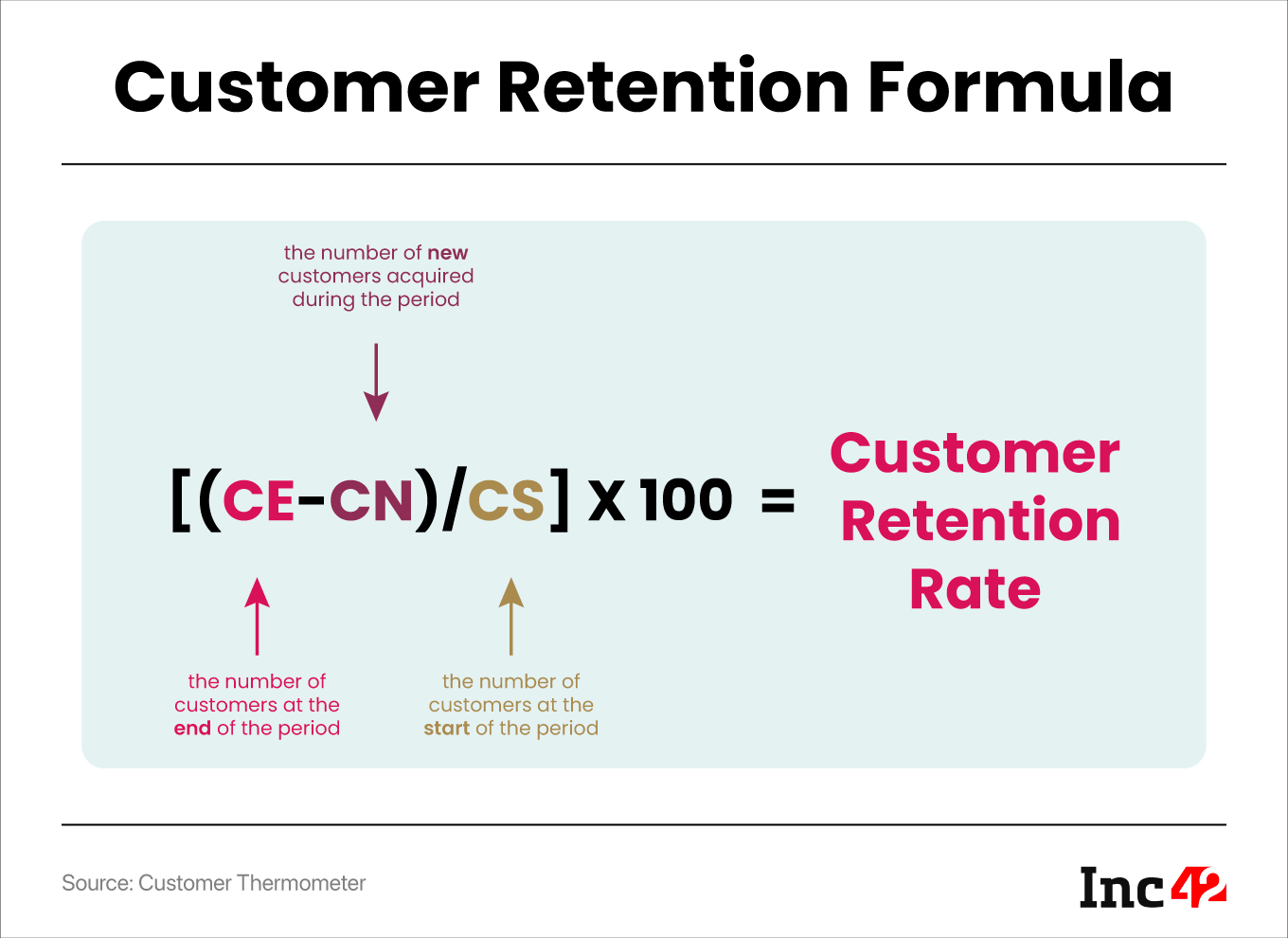What Is Customer Retention?
Customer retention refers to a company’s ability to retain its existing consumers over time. It is essential to the success of a business because it demonstrates the organisation’s ability to cultivate strong customer relationships and customer loyalty.
Retention requires delivering exceptional value, establishing trust, and consistently meeting or exceeding customer expectations, resulting in recurrent business and an increase in customer lifetime value.
What Is Customer Retention Rate?
It is an essential metric used to evaluate the effectiveness of a company’s retention efforts. Typically calculated on a monthly, quarterly, or annual basis, it quantifies the percentage of consumers retained by a business during a specified time period.
The customer retention rate is determined using the following formula:
[(CE-CN)/CS] x 100 = Customer Retention Rate
Where:
- CE is the number of customers at the end of the period
- CN is the number of new customers acquired during this period
- CS is the number of customers at the start of the period

A high customer retention rate indicates that the company has been successful in building strong customer loyalty, resulting in continued patronage and a stable customer base.
What Are The Strategies For Customer Retention?
Customer retention strategies are deliberate and proactive approaches that businesses employ to maintain the engagement, satisfaction, and loyalty of their existing consumers. These strategies are centred on providing exceptional customer experiences, boosting customer satisfaction, and establishing long-lasting customer relationships. Following are some of the common strategies:
- Personalisation: This strategy is all about treating customers as individuals with unique preferences and needs, and tailoring products, services, and communication accordingly.
- Exceptional customer support: Ensuring prompt and effective resolution of customer queries and complaints, going the extra mile to exceed customer expectations.
- Loyalty programmes: Companies can employ reward-based loyalty programmes to incentivise repeat purchases and foster customer loyalty.
- Engagement and communication: This strategy includes regularly engaging with customers through various channels, such as emails, social media, and personalised content, to maintain interest and connection.
- Post-purchase follow-up: Following up with customers after a sale to gather feedback, addressing their concerns, and ensuring their satisfaction help businesses in many aspects.
- Quality products and services: Consistently delivering high-quality products and services that meet or exceed customer expectations.
- Proactive churn prevention: Monitoring customer behaviour and identifying signs of potential churn to proactively address issues and retain customers.
- Community building: Under this strategy, businesses can create a sense of community among customers to foster interactions and discussions, increasing customer engagement and loyalty.
What Are Some Prominent Examples Of Customer Retention?
Several companies have excelled by implementing innovative strategies. Here are a few examples:
- Amazon Prime: Amazon’s subscription service, Amazon Prime, offers members benefits like free and faster shipping, access to exclusive content, and special discounts. By providing ongoing value, Amazon Prime has fostered high customer loyalty, leading to repeat purchases and long-term retention.
- Starbucks: Starbucks has successfully built a loyal customer base through its loyalty programme. By offering rewards, personalised offers, and the convenience of a mobile app, Starbucks has incentivised customers to choose its stores over competitors, resulting in improved customer retention.
- Apple: Apple has built a strong community of loyal customers who eagerly anticipate new product releases and upgrades. The company’s focus on innovation, product quality, and customer experience contributes to its high customer retention rate.
Why Is Customer Retention Important?
Customer retention is of paramount importance for several reasons:
- Cost-effectiveness: Acquiring new customers can be significantly more expensive than retaining the existing ones. By focussing on retention, businesses can optimise their marketing budgets and achieve higher returns on investment.
- Customer lifetime value (CLV): Retained customers tend to generate more revenue over time. As they become familiar with a brand and its offerings, their CLV increases, positively impacting the company’s bottom line.
- Brand advocacy: Satisfied and loyal customers are more likely to recommend a brand to friends and family. Word-of-mouth referrals from loyal customers can lead to new customer acquisition, further strengthening the business.
- Stability and growth: A steady and loyal customer base provides stability to a company, even during economic downturns or industry fluctuations. This allows businesses to focus on growth and expansion rather than constantly battling customer attrition.
- Competitive advantage: Can be a significant differentiator in competitive markets. Companies that excel in customer retention gain a competitive edge, as their customers are less susceptible to competitor offerings.








